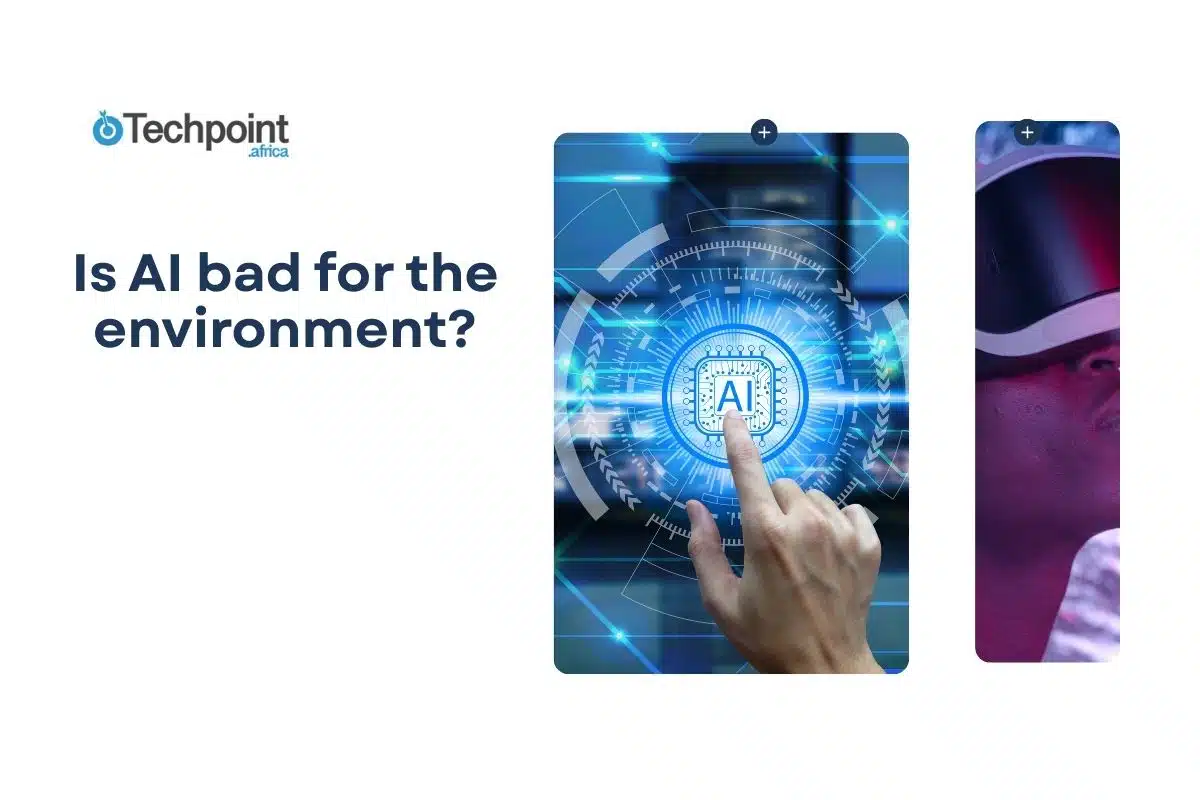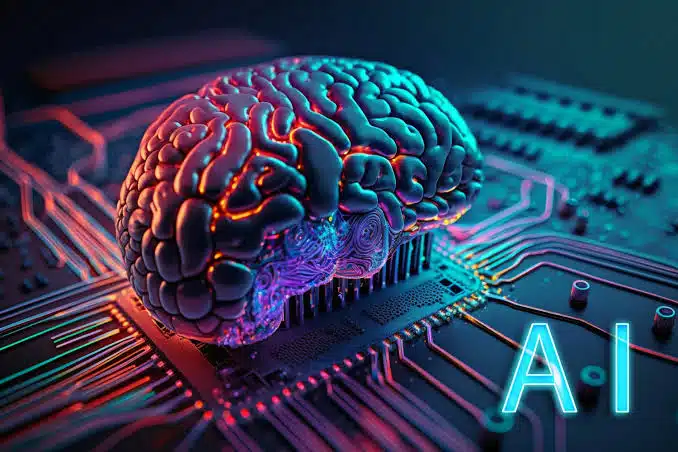
I never thought of AI as something that could hurt the planet. It’s just code, right? All digital with no smoke, no mess, no factories. But the more I looked into it, the more I realized that artificial intelligence isn’t as invisible or harmless as it seems.
Turns out, behind every AI model is a mountain of data, rows of power-hungry servers, and a surprising thirst for water. And that’s just scratching the surface. The deeper I dug, the more I found myself asking: Is AI quietly damaging the environment while we cheer on its progress?
Here’s everything I discovered, and honestly, it still has me thinking.
Is AI actually bad for the environment?
At first glance, AI doesn’t seem like something that could harm the planet. It lives in the cloud, runs silently in the background, and feels completely digital. But as I looked closer, I realized that building and running AI systems depends heavily on physical infrastructure and that infrastructure demands energy, water, and hardware.
So yes, AI does have an environmental cost. The impact might be hidden from view, but it’s very real.
Here are the main ways AI affects the environment:
- Electricity consumption – powering AI training and usage takes huge amounts of energy
- Water usage – cooling AI servers relies heavily on water, sometimes millions of liters per day
- E-waste and hardware demand – producing and replacing AI hardware adds to global tech waste
- Carbon emissions – much of the power used still comes from fossil fuels
- Raw material extraction – AI hardware requires rare earth minerals that are mined at an environmental cost
Each of these areas deserves a closer look and once I started digging into them, I was honestly shocked by how much goes on behind the scenes.
Let’s take them one by one.
How much electricity does AI really use?
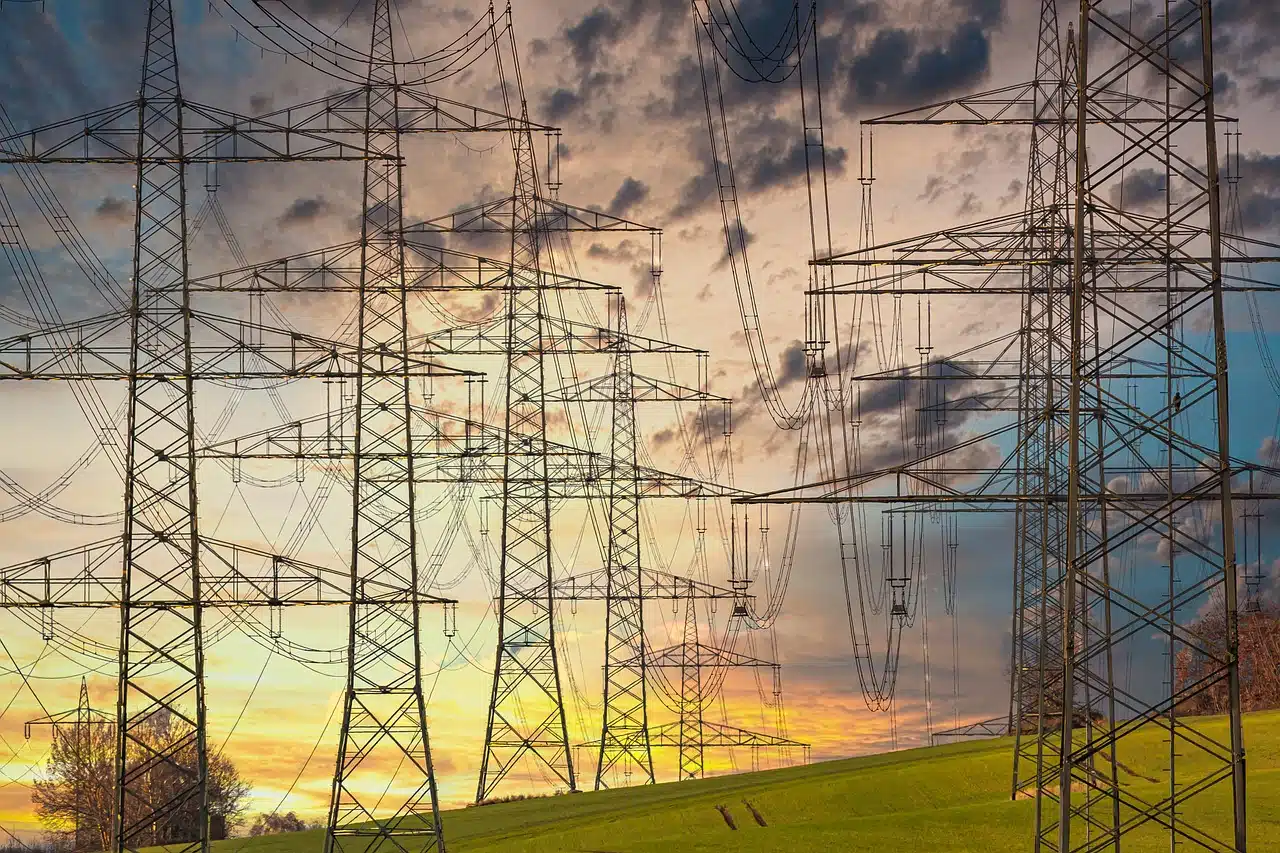
Running AI takes far more electricity than most people realize, especially during the training phase. These models aren’t trained on a regular laptop. They require rows of powerful GPUs, all running non-stop for days or weeks, depending on the model’s size.
Take GPT-3, for example. Training it reportedly uses as much electricity as 120 U.S. homes consume in an entire year. That’s just to train one model, not to operate it afterward.
Here’s why the energy use is so high:
- Training involves massive datasets being processed repeatedly
- High-performance hardware like GPUs or TPUs is used, which draws much more power than standard computers
- Training runs can last weeks or even months
- These processes are run inside huge data centers, which also consume energy for lighting, cooling, and security
Once a model is trained, it’s not “set and forget.” AI models are constantly updated, fine-tuned, and retrained and every time that happens, the cycle repeats.
According to researchers at the University of Massachusetts Amherst, training one large model can emit more than 626,000 pounds of CO₂. That’s about the same as driving five cars for their entire lifespan.
And that’s just for one model.
In reality, models are retrained, updated, and scaled. There isn’t just one version being trained once. There are multiple runs, across dozens or even hundreds of models, especially with companies competing to make theirs faster, smarter, and more accurate.
Most of this energy doesn’t come from clean sources. Despite the talks around renewables, fossil fuels still dominate the grid in many parts of the world. So while AI feels digital and “clean,” its foundation is often powered by coal, gas, or oil.
It’s easy to miss this. I missed it too. But once you realize that AI runs on huge amounts of electricity and that electricity often comes with a carbon footprint, it becomes clear that the environmental cost starts long before you ever type a prompt.
Every AI reply comes at a cost
It’s easy to assume the hard work is over once an AI model is trained, but that’s far from true. The real energy drain starts when we begin using it. Each time you type a prompt, generate an image, or ask an AI to write something, you’re triggering a powerful server to fire up and work in the background.
Those tiny actions come with a real environmental cost. So, how much energy does one AI response really use?
Generating one AI response (especially long-form text or images) can consume as much electricity as charging a smartphone. Some estimates show AI-powered search engines can use up to four to five times more energy per query than traditional search tools like Google.
Image generation is even worse. Creating a single AI image can require more electricity than a light bulb left on for hours. And this doesn’t include the cooling systems, networking hardware, or storage running alongside these servers, all consuming energy in the background.
Why is AI so power-hungry, even after training?
Because your AI chat isn’t running on your phone or laptop. It’s being processed in remote data centers, packed with specialized chips (like GPUs and TPUs) that handle the workload. These chips require:
- Constant power to stay active and responsive
- Redundant systems to handle spikes in traffic
- Backups and failovers, which all stay online, just in case
In short, your quick back-and-forth with an AI tool runs through a high-performance computing system, not a regular browser.
Now, multiply that by millions.
A single prompt might not seem like much. But consider that tools like ChatGPT serve over 100 million users. Also, AI is now embedded into search, writing apps, customer service, design platforms, and more. Now, people don’t just ask once, they explore, tweak, test, and retry multiple times
Even with just a moderate user base, these tools are generating billions of AI calls each day, and each one takes power. The result is a massive, mostly invisible carbon footprint.
So, no, it’s not just the training phase that affects the environment. Every prompt counts. Every casual question, quick brainstorm, or AI-generated poem adds to the energy demand behind the scenes.
As AI tools become more mainstream, their electricity use keeps growing, not just during training, but every time we use them. And that brings us to the next issue.
How AI puts pressure on water resources
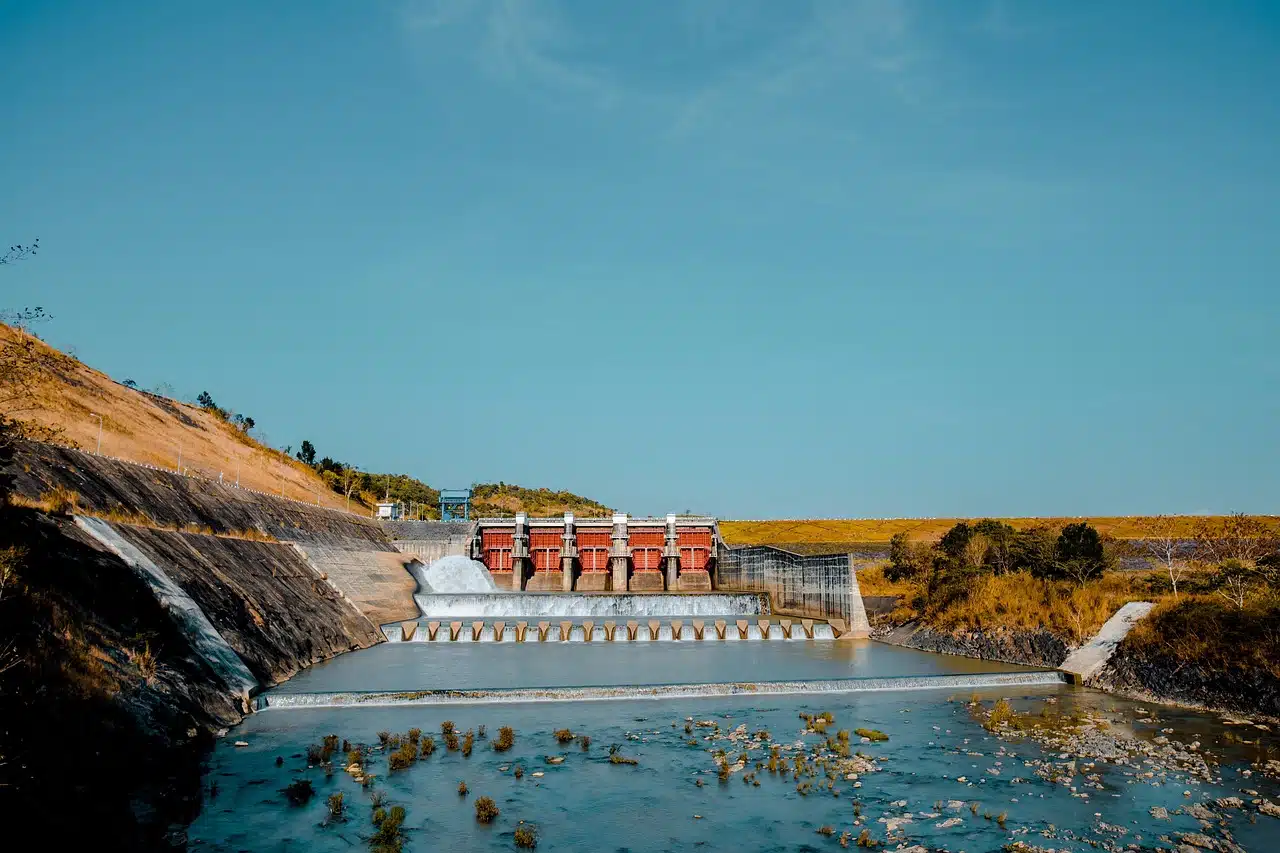
One thing I didn’t expect to find while researching AI’s environmental impact was how much water it uses. But water plays a major role in keeping AI systems running, especially in cooling the servers that power them.
Data centers, the massive buildings filled with computers that run AI models, generate a lot of heat. To keep those machines from overheating, companies use cooling systems, and many of those rely on water.
How much water are we talking about? Here’s a glimpse:
- Microsoft reportedly used nearly 700,000 liters of water in just one month to cool the servers that trained GPT-4
- Google’s U.S. data centers used over 4.3 billion gallons of water in 2021 alone
- Some facilities use millions of liters every single day, depending on weather, location, and traffic load
The real issue is many of these data centers are built in areas already facing water stress. Communities in drought-prone regions are left wondering whether the water they need for homes and farming is being funneled into AI development instead.
And while companies are trying to offset this with recycled water systems or by pledging to replenish what they use, those promises aren’t always clear, transparent, or fast enough to match rising AI demand.
So while AI may seem like it lives in the cloud, it also has a very real footprint on the ground in the form of massive water use.
The e-waste problem no one talks about
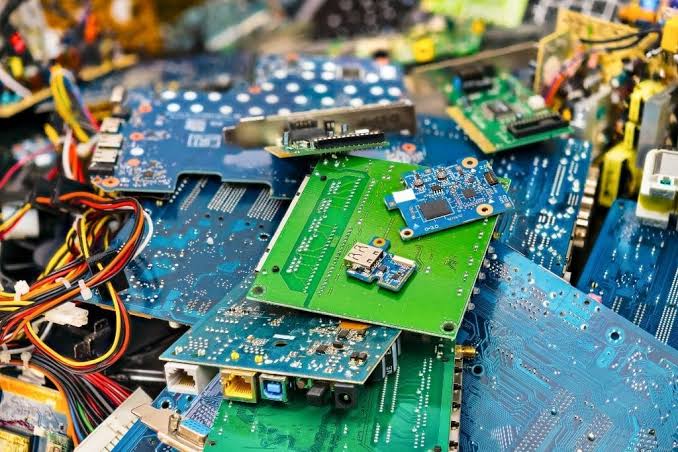
Every AI model relies on physical hardware, not just during training, but long after it’s deployed. And that hardware doesn’t last forever.
As AI development speeds up, so does the demand for specialized chips like GPUs and TPUs. These high-performance processors are the backbone of every major model, but they also have shorter lifespans, need regular upgrades, and are often discarded faster than general-purpose tech.
Here’s what this means for the environment:
- More hardware production means more mining of rare materials like lithium, cobalt, and palladium, all of which have their own environmental and human costs
- Outdated chips and servers often end up as e-waste, and while some parts can be recycled, a huge amount still ends up in landfills
- Most AI models run on dedicated racks of machines in server farms, and as models grow, so does the need for more machines, more storage, and more physical space
The result is a tech race that quietly produces tons of waste, both in production and disposal.
Unlike consumer electronics, these servers aren’t visible to most people. We don’t hold them in our hands or replace them every few years like phones. But they’re out there multiplying, aging, and being replaced constantly as AI becomes faster, more advanced, and more widely used.
This side of AI’s growth rarely makes headlines. But once you see it, it’s impossible to ignore that progress in the cloud creates waste on the ground.
What about AI’s carbon footprint?
Electricity, water, and hardware all add up, but what ties them together is carbon. AI systems leave a carbon footprint, and depending on how they’re powered, that footprint can be shockingly large.
The core issue is that most data centers that run AI models are still powered by grids that rely heavily on fossil fuels like coal, oil, and natural gas. So every time a model is trained or used, it contributes to carbon emissions unless it’s fully running on clean energy.
Let’s break that down:
- Training a single large AI model can emit over 300,000 kilograms of CO₂, according to researchers, that’s like flying a person across the world 300 times
- Running the model after training also adds up, especially as user numbers grow into the millions
- In regions without access to renewable energy, data centers may be powered by some of the dirtiest sources of electricity
Even companies that use partial renewable energy often mix sources, so it’s not always easy to tell how green an AI system really is. Some have made public pledges to go carbon neutral, but those timelines often stretch years into the future, while AI usage is growing right now.
Until clean energy becomes the standard, AI’s carbon output will remain a major environmental concern. And unlike cars or factories, it’s harder to trace. There’s no smoke, no sound, no warning, just quiet emissions running behind the scenes, at scale.
The environmental cost of building AI hardware
Before an AI model runs, before it’s trained, and before you ever type a prompt, something has already been taken from the earth.
The chips that power AI don’t just appear out of thin air. They rely on rare earth materials and mined metals, pulled from deep underground, often at a high cost to the environment and local communities.
Here’s what goes into making the hardware that runs AI:
- Lithium, cobalt, and nickel are essential for batteries and energy systems in AI infrastructure
- Palladium, copper, and gold are used in wiring and chip components
- These materials are often mined in countries where regulations are weak, leading to toxic waste, soil degradation, and water pollution
And it’s not just about the earth. Many of the mining operations take place in regions where labor conditions are poor, and in some cases, even exploitative. So while the goal of AI might be progress, the foundation it’s built on often tells a different story.
As AI adoption increases, so does the demand for hardware. And as hardware demand rises, so does the need for raw materials, creating a loop that’s hard to break — unless companies invest more seriously in recyclable designs, ethical sourcing, and alternative materials.
We often think of AI as futuristic and abstract. But the truth is, every AI query has roots in something dug out of the ground, and that extraction leaves a mark.
Can AI be greener? What’s being done so far
It’s clear that AI has an environmental impact, but the story doesn’t end there. The good news is that some companies, researchers, and engineers are working on ways to make AI more sustainable. It’s not perfect yet, but there’s movement in the right direction.
Here’s what’s being explored or actively implemented:
1. Smarter, Smaller Models
Not every AI system needs to be huge. Some researchers are building smaller, more efficient models that can perform well without consuming massive amounts of energy.
- These “lightweight” models are cheaper to train and run
- They can be deployed on local devices, reducing reliance on large data centers
- Some are even open source, encouraging sustainable AI development in the broader community
2. Green Data Centers
Big tech companies like Google, Microsoft, and Amazon are investing in more energy-efficient data centers, with a focus on using renewable energy sources.
- Some centers are powered by wind, solar, or hydropower
- Cooling systems are being redesigned to use less water or recycle it
- Data centers are also being located in cooler climates to reduce the energy needed for cooling
It’s not universal, but the pressure is increasing and more companies are being held accountable for their power sources.
3. Better Hardware Recycling
There’s a growing push to rethink how AI hardware is produced and discarded.
- Tech companies are being encouraged to design chips with longer lifespans
- Some are experimenting with modular servers that can be upgraded, not just replaced
- Recycling programs for e-waste are slowly becoming more common, though they still have a long way to go
4. Transparency and Reporting
More researchers, journalists, and advocacy groups are calling for greater transparency in how AI systems are trained and powered.
- There’s demand for public reporting on emissions, water usage, and hardware waste
- Tools are being built to estimate and disclose the environmental cost of training a model
- Some startups are even branding themselves as “low-carbon AI”, offering greener alternatives
None of these solutions are perfect, and they’re not yet widespread. But they show that the industry is starting to wake up to the reality that AI can’t grow unchecked. It has to grow responsibly.
What can you do about it as an AI user?
You probably won’t stop using AI tools, and you don’t have to. But once you know the environmental cost behind the scenes, it makes sense to use them more intentionally. AI is powerful, but like anything, it’s better when we’re mindful of how we use it.
Here are a few ways you can reduce your own impact:
1. Use AI with purpose
Instead of running 20 variations of the same prompt or asking just for fun, consider:
- Being more precise with your questions
- Reusing good outputs instead of regenerating endlessly
- Using simpler tools for tasks that don’t require heavy AI processing
2. Choose tools that value sustainability
Some platforms are starting to share how they handle energy use, carbon offsets, or water cooling. Keep an eye out for:
- AI companies using renewable-powered data centers
- Open-source or lightweight models that run locally
- Platforms that are transparent about their environmental practices
3. Ask questions, expect answers
The more users care, the more companies will care too. Don’t be afraid to:
- Look for sustainability info in product FAQs or About pages
- Email companies to ask about their environmental policies
- Support AI providers that make an effort to do things responsibly
This isn’t about perfection, it’s about awareness. AI is a tool. It can be incredible. But every tool we use leaves a mark. The more we understand that, the better we can balance innovation with responsibility.
Wrapping up
AI isn’t just lines of code floating in the cloud; it’s a system that runs on real energy, real water, and real hardware. As powerful as it is, it comes with a footprint that most of us don’t see. The electricity behind every prompt, the water behind every response, the servers behind every image, they all tell a story.
Is AI bad for the environment? It depends on how it’s built, how it’s powered, and how we use it.
The more we pay attention to those details, the more we can shape the future of AI into something not just smart, but sustainable.
Have you ever considered the environmental side of AI before now? Let me know in the comments and if you’ve seen any tools or companies trying to do better, I’d love to hear about them too.
Let’s keep the conversation going.
You may also like :
| Favourite AI Quotes | Best AI courses for beginners 2025 |
| Best AI for lawyers 2025 | Top AI Courses in SA |
| Best AI tools for content creation |

